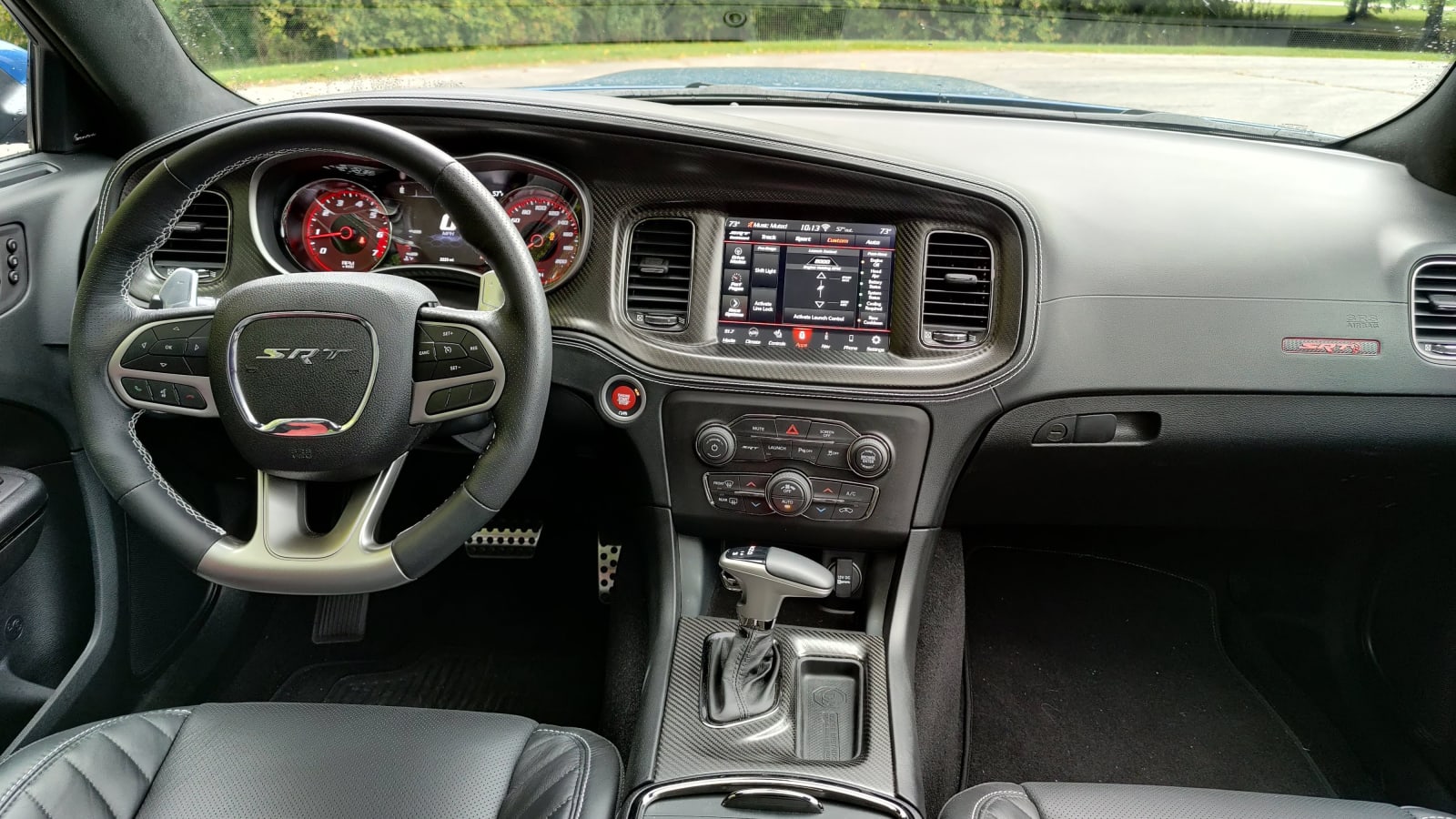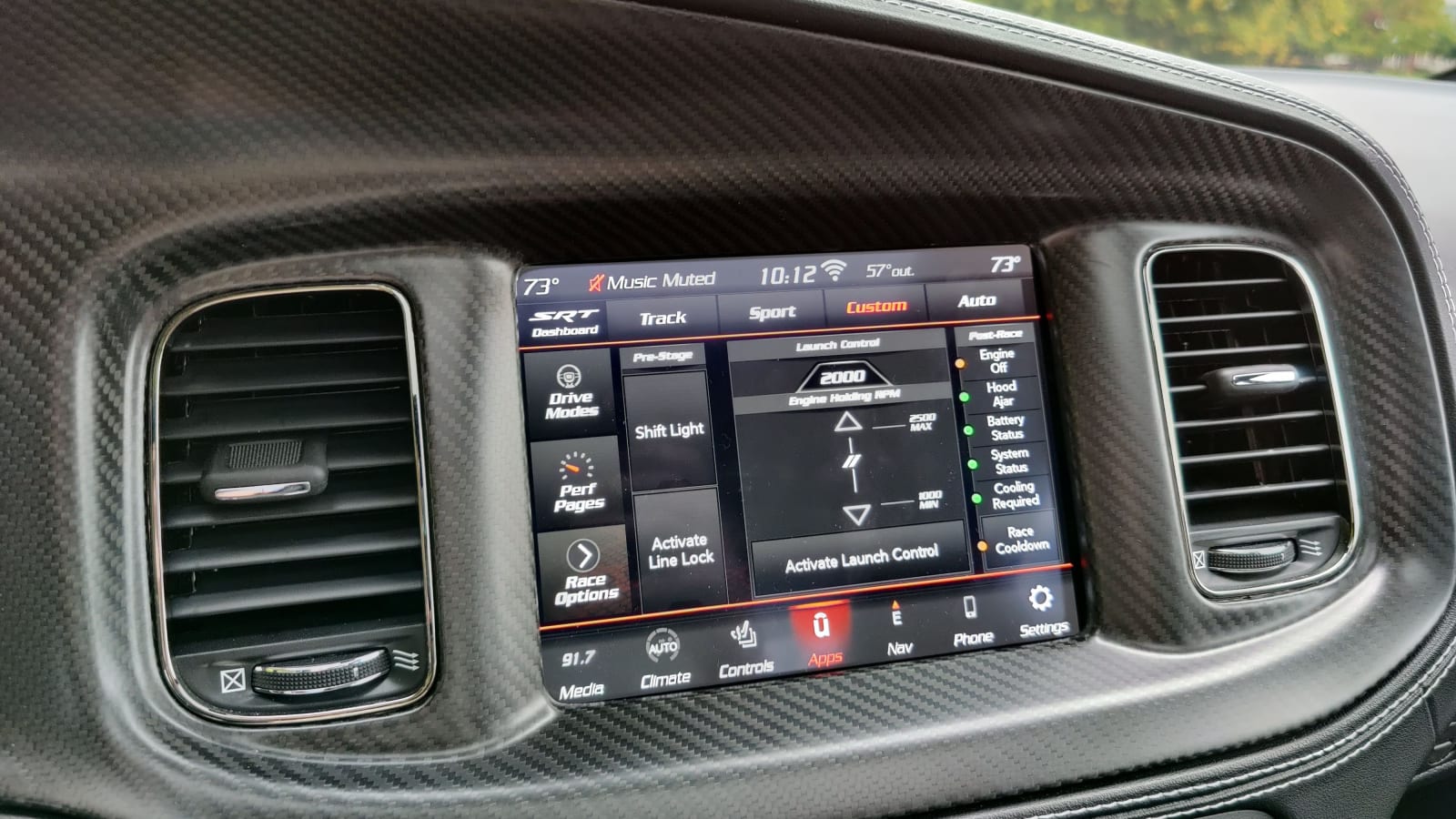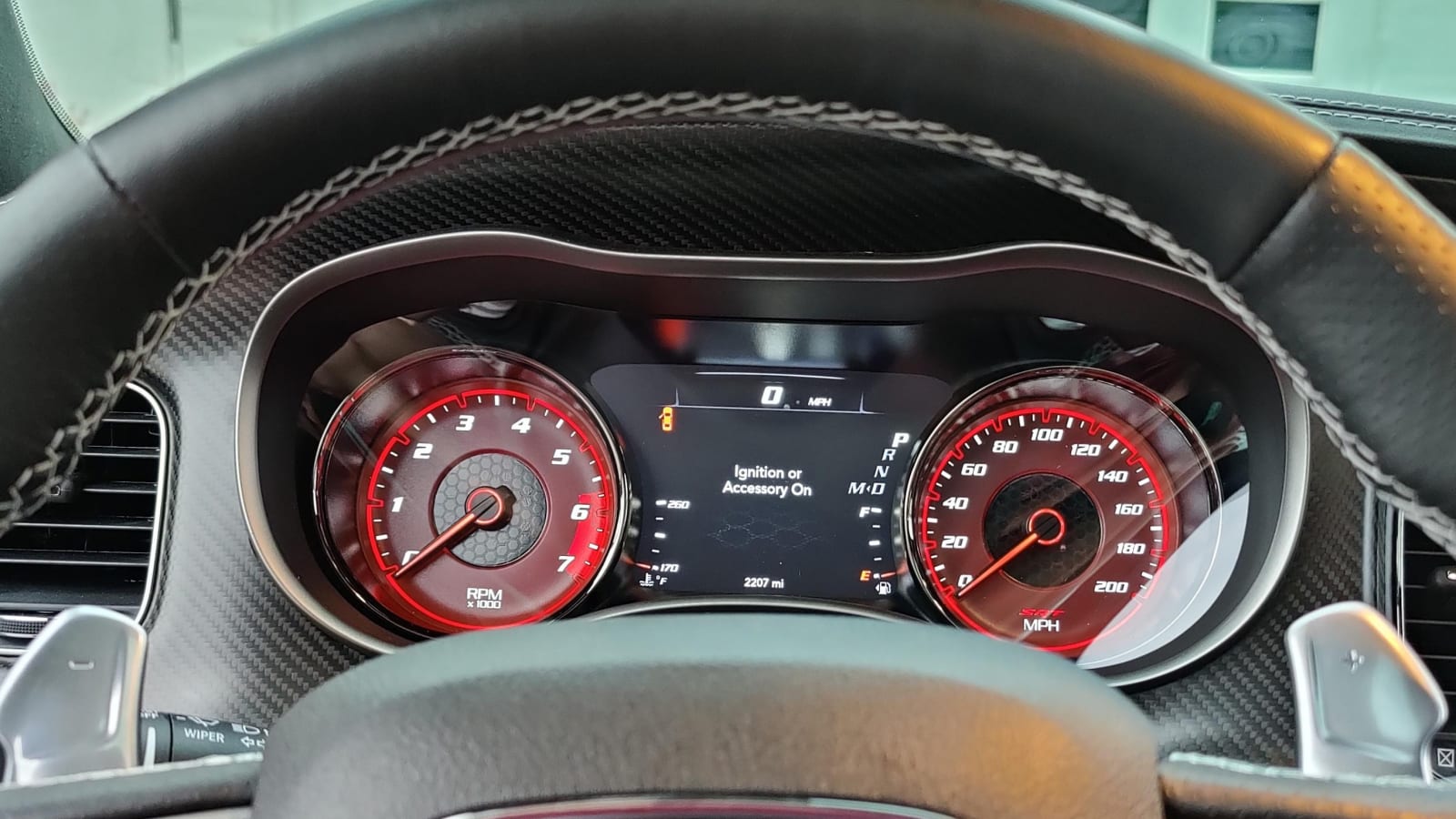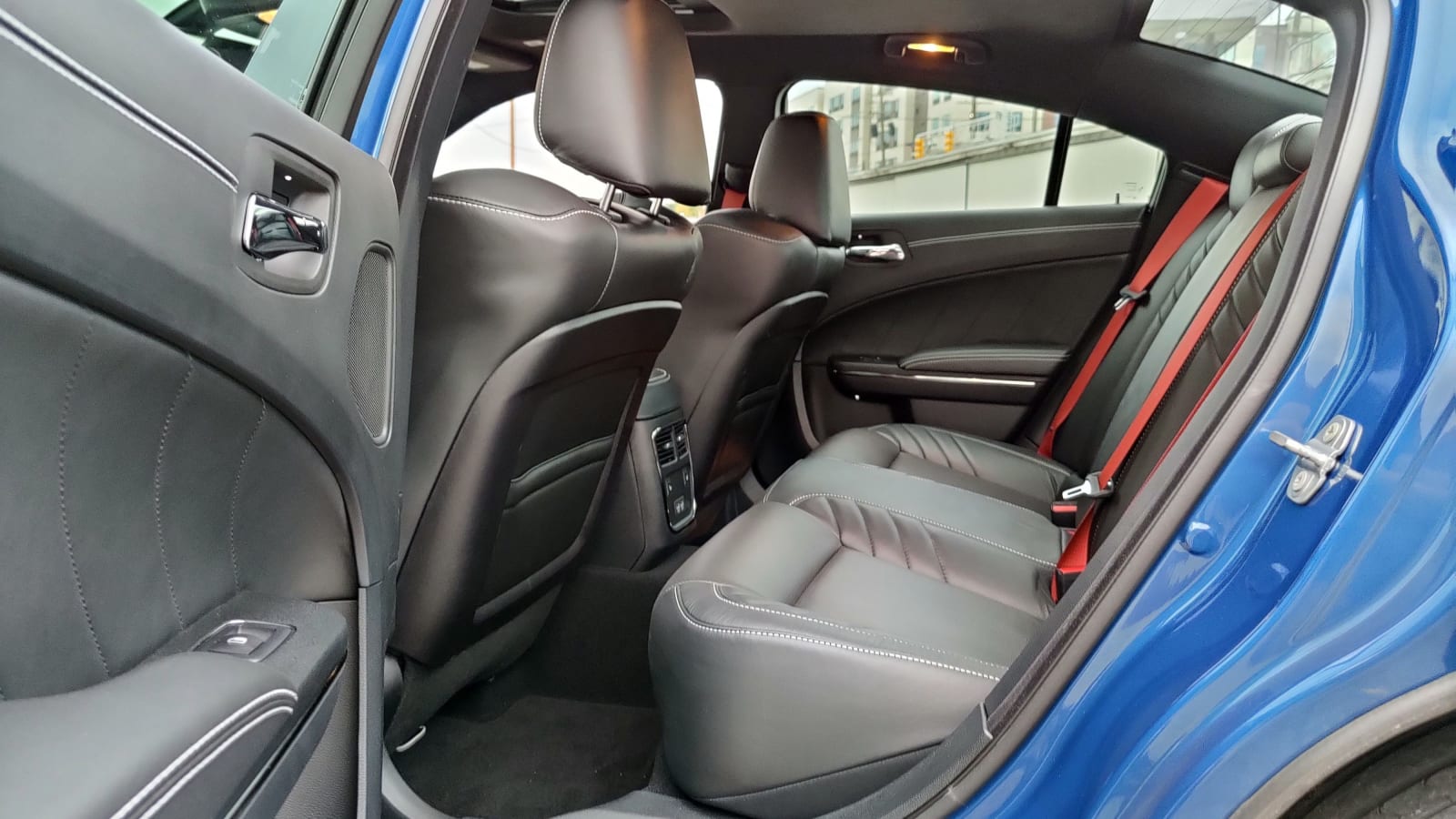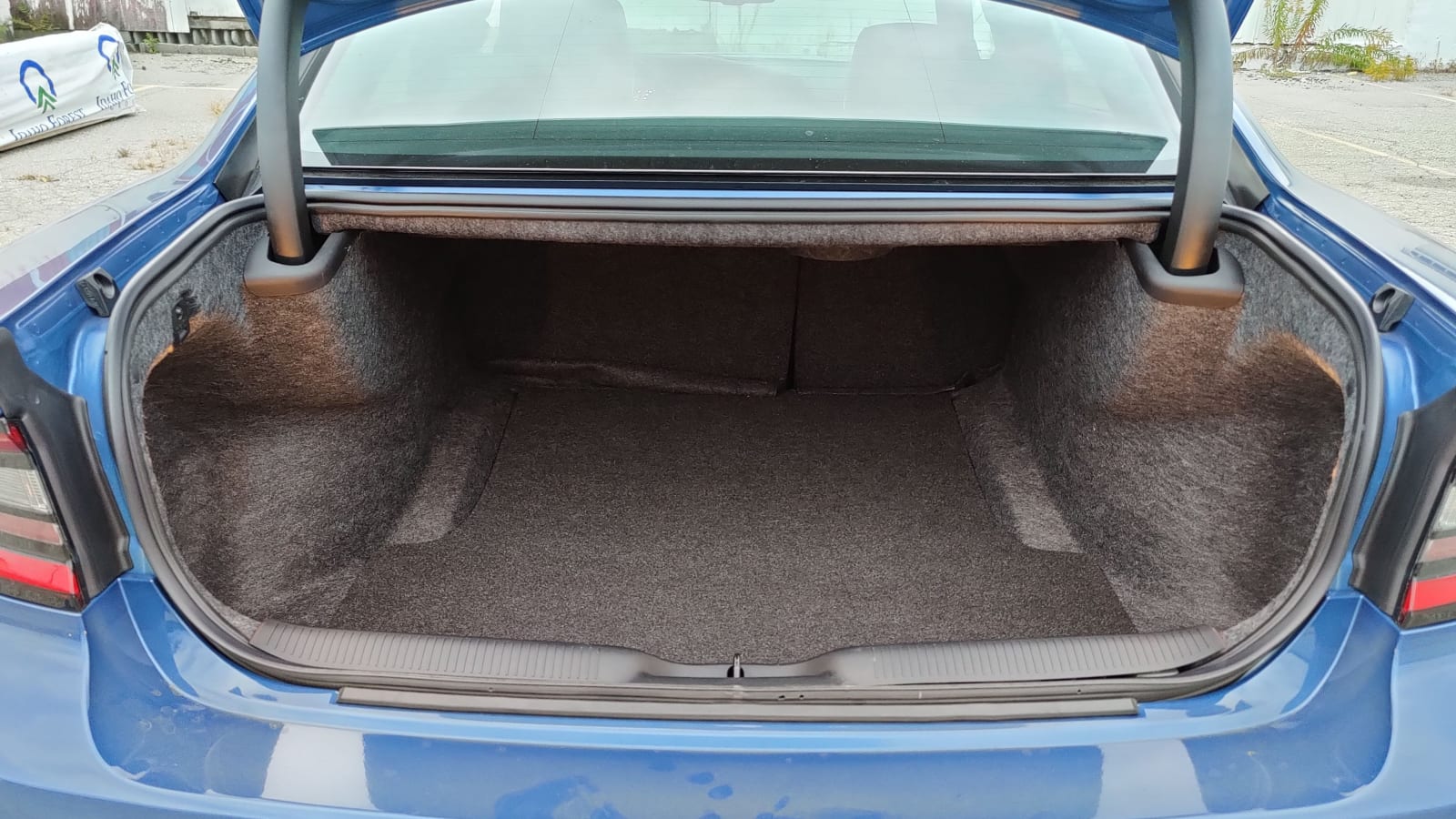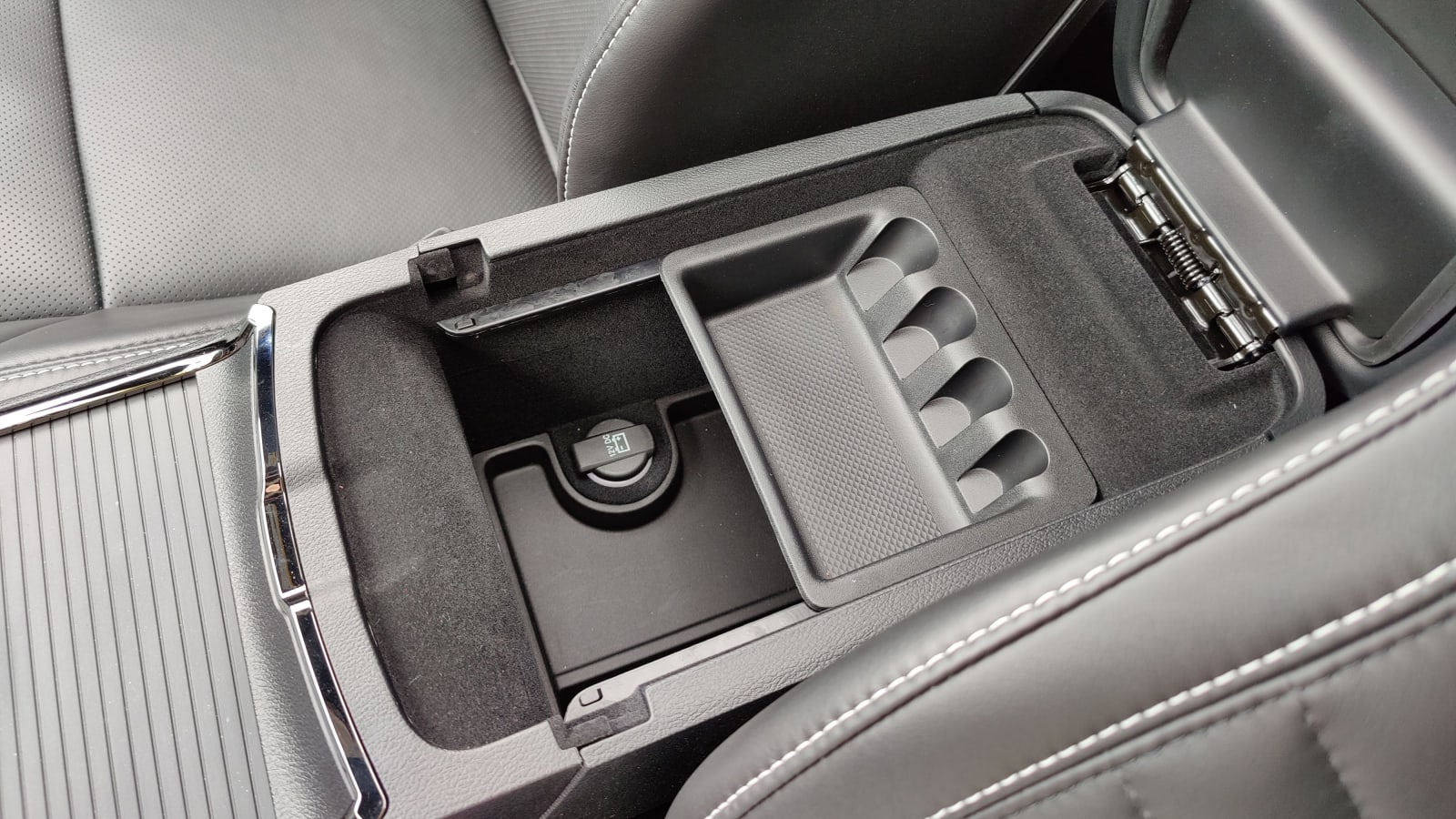The 2021 Dodge Charger is a big-boned relic from America’s past where full-size sedans and large displacement engines reigned. Fairly normal-to-drive V6 versions aim to be stylish and utilitarian, whereas the SRT variants will rip your head off and fill the air with tire smoke. There is no more childish sedan (in an extremely good way) you can buy with a warranty than a Charget Hellcat, and Dodge is peddling two versions of it in the 2021 Charger lineup.
Horsepower ranges from 292 ponies all the way up to 797 with a few options in between. Styling, power and price are really the main big reasons to buy a Charger. The interior feels cheap and dated all the way up to the most expensive trims. You still get FCA’s excellent infotainment system, but safety tech is lacking. If you’re after a V8, expect to be paying a lot at the pump, because poor fuel economy comes standard. Besides the mega-expensive Germans (Mercedes-AMG E 63 S or BMW M5), your choices for a high-power and high-performance sedan are extremely limited. If you want something with four doors, big power and need it to be relatively affordable, the Charger SRT lineup is the only place to turn. We’re less enthusiastic about the V6-powered Chargers (you might as well get a Toyota Avalon at that point), so unless you want a V8, it’s probably not the best choice.
What’s new for 2021?
Dodge added a Charger Hellcat Redeye variant for 2021. Up until now, the Challenger was the only Hellcat-powered car to get the more potent 797-horsepower version of the 6.2-liter supercharged V8. It’s quicker around a road course than your standard Charger Hellcat Widebody and grabs the same red visual add-ons present in the Challenger version.
In other 2021 Hellcat news, the regular Charger Hellcat gains 10 horsepower to bring it up to 717 horses, equaling the Challenger Hellcat’s output. It also gets a redesigned hood and electric power steering. Changes to the V6 Charger are limited, but Dodge introduced a new 20-inch wheel available on all-wheel drive models.
![]()
![]()
![]()
What’s the Charger interior and in-car technology like?
Go ahead and Google, “2011 Charger interior.” What you’re looking at isn’t a whole lot different than what Dodge is working with today. The screen is nicer and there’s a new steering wheel and shifter, but the Charger’s interior design has stayed the same for a decade. So, it comes as no surprise that the Charger feels dated inside, even compared to the Challenger (with which it shares nearly all of its mechanical bits). You can spruce up the dash with actual carbon fiber, but it embodies the definition of lipstick on a pig. While materials quality and construction used to border on atrocious before that 2011 redo, it’s still not great. There’s no amount of Laguna Leather or Alcantara that can save it. Once you come to terms with this, though there are some positives.
Dodge has done a stellar job of updating it with tech fit for 2021. The Charger comes standard with a 7-inch touchscreen Uconnect infotainment system. It has Apple CarPlay and Android Auto, and it’ll also support satellite radio. You can upgrade to an 8.4-inch touchscreen, and navigation is available as the final tier. Uconnect is one of our favorite infotainment systems, and it works great in the Charger. On high-performance models, you even get SRT Performance Pages that allow for in-depth drive mode customization, a number of performance timing tools and a huge trove of real-time gauges and car information.
You can also get heated and cooled seats, a sunroof, automatic wipers, premium audio system upgrades and a long list of driver assistance features that we’ll detail in the safety section at the end. It may look like an interior from a decade ago, but all this tech makes it acceptable in this new decade.
![]()
![]()
![]()
How big is the Charger?
This three-box sedan is proof you can still buy something that carries your family and looks badass doing it. Cars that can match the Charger in size and speed tend to be from Germany and have price tags with six figures, making the Charger a bargain in comparison. The most comparable vehicle comes from Chrysler with the 300 that the Dodge shares a platform with. For those who might’ve had a Challenger or another American muscle car previously but are now in need of a usable backseat and an extra set of doors, the Charger is a great fit. You have 40.1 inches of rear legroom to stretch out, so even taller adults can fit behind tall drivers with ease. The Toyota Avalon offers a similar amount of excessive backseat space.
There is a ton of space for luggage in the trunk, too. Dodge says there’s 16.5 cubic-feet and the expansive volume back there looks every bit that useful and large. It’s just a bit bigger than those of the biggest midsize family sedans like the Hyundai Sonata and Honda Accord.
What are the Charger’s performance and fuel economy?
One V6 and three V8s make up the muscle that pushes this big, heavy sedan around. The 3.6-liter V6 comes standard on SXT and GT (pictured above). When paired with rear-wheel drive, it makes 292 horsepower and 260 pound-feet of torque. All-wheel-drive models get a slight bump to 300 horsepower and 264 pound-feet of torque. Shifting is handled by an eight-speed automatic transmission — there is no manual available on any Charger. Fuel economy for 2021 was not available at the time of this writing, but expect the 2020 figures to carry over largely unchanged. The rear-wheel-drive V6 model is rated for 19 mpg city, 30 mpg highway and 23 mpg combined. Opting for all-wheel drive drops it down to 18/27/21 mpg. This is worse than similarly large sedans with similar power outputs.
Next up the power ladder we get to the R/T and its 5.7-liter V8. This old, pushrod V8 sends 370 horsepower and 395 pound-feet of torque to the rear wheels through a sturdier eight-speed automatic transmission. From here on up, all-wheel drive is not available. Fuel economy takes a predictable plunge to 16/25/19 mpg.
After the R/T, we have the Scat Pack and Scat Pack Widebody. Both these models have a naturally aspirated 6.4-liter V8 good for 485 horsepower and 475 pound-feet of torque. That’s plenty to roast the rear tires with ease. Once again, it uses an eight-speed automatic transmission. Fuel economy comes in at 15/24/18 mpg for both Scat Pack versions, but you’ll need to be easy on the throttle to hit those figures.
Lastly, we get to the pair of full-on SRT models. The Charger Hellcat Widebody (pictured below) comes with SRT’s glorious 6.2-liter supercharged V8 that puts out 717 horsepower and 650 pound-feet of torque. Or, in other words, enough. This gets hooked up to an especially stout and high-torque capacity eight-speed automatic transmission. A high output version of the 6.2-liter supercharged V8 is also available. This engine comes in the Hellcat Redeye and makes 797 horsepower and 707 pound-feet of torque. Apologies for misspeaking before. Now we can say it’s enough. And if you care about fuel economy, do not buy a Hellcat.
What’s the Charger like to drive?
If it ain’t broke, don’t fix it. That’s the attitude Dodge is taking with the Charger, because age hasn’t made this big four-door any less enjoyable to drive. The V6 models are torquey and strong. Dodge’s all-wheel drive system makes it suitable for winter adventures, and the ride is downright plush. The cabin is a little noisy, but even the V6 makes a pleasingly sporty noise. Those who prefer a sportier drive experience may find the Charger’s high seating position off-putting, but it aids in visibility when navigating today’s ocean of crossovers, pickups and SUVs.
The R/T is the entry-level V8 trim, but it’s still a loud, tail-happy sedan that is reasonably quick. Handling is on the sloppy side, but you can tack on a Performance Handling package that improves matters. Still, the Scat Pack or Scat Pack Widebody (pictured below) are the trims to go for if you want a Charger with greater cornering ability, but the Widebody does significantly hamper maneuverability in tight spaces
More displacement with the Scat Pack also produces more giggling, as it goes from 0-60 mph in just 4.3 seconds. The sound is intoxicating. There is no quiet exhaust switch, so apologies in advance to the neighbors.
With the Widebody suspension, tire and brake package, this Charger is also the most balanced of the bunch. Handling is about on-par with the Hellcat, and the power is far more usable on the road. We won’t deter you from a Hellcat, but a Scat Pack Widebody is the perfect middle ground in the Charger lineup for someone who wants a bit of everything for a good price, but keep in mind that it comes with a bump in tire and brake upkeep costs
And then we come to the Hellcat’s intoxicating, mind-altering, spine-tingling, endless power. You’d swear there’s a nuke under its scooped hood. It’ll hit 60 mph in just 3.6 seconds, do the quarter mile in 10.96 seconds and top out at 196 mph. That 0-60 mph time is entirely traction limited, too. It feels just as quick from 30-90 as it does from 0-60. The supercharger whine is the loudest of any production car, and the exhaust sounds downright nasty. Anyone who thinks a Charger is too big to toss around needs to drive this one. Despite having 56% of its weight over its ginormous front tires, it’s very well balanced and turns in even if you think you’re coming in too hot. The Hellcat is now actually fun to push in the hills. It takes a solid set in the faster stuff and rotates on the brakes perfectly in slower corners, allowing you to drive it out on the throttle in long, controlled powerslides.
We have yet to drive the Hellcat Redeye, but will update this review when we do.
What more can I read about the Charger?
What features are available and what’s the price?
The 2021 Charger lineup starts with the SXT trim at $31,490, including the $1,495 destination charge. Adding all-wheel drive increases the price by $3,600, so you better really need it.
Now, as should already be obvious if you’ve made it this far, there are a lot of Charger models. Besides variety of engines, there’s an immense number of features and options available. If we were to list them all, we’d need a page longer than the 11’s the Hellcat is capable of putting down. If you want to dig deeper into the features, specs and local pricing of each model, you can find it here on Autoblog. All the base prices are listed below.
- SXT: $31,490
- GT: $33,490
- R/T: $38,490
- Scat Pack: $42,590
- Scat Pack Widebody: $48,090
- SRT Hellcat: $71,490
- SRT Hellcat Redeye: $80,090
What’s the Charger’s safety equipment and crash ratings?
You don’t get many standard safety features on the Charger. Besides the usual airbags, the list starts and ends with rear parking sensors. Adding the $1,295 Driver Convenience Group tacks on blind-spot warning and rear cross-traffic alert (among other non-driver assistance systems). A $1,895 Technology Group adds full-speed collision warning, lane departure warning, adaptive cruise control and auto high-beams.
The Insurance Institute for Highway Safety rates the Charger “Good” for all crash tests except the driver-side small overlap front test, where it received a Marginal rating (another downside of going so long without a full redesign). It also received a Poor rating for all headlight options. The National Highway Traffic Safety Administration gave it a five-star overall safety rating.
Related video:
Source link


